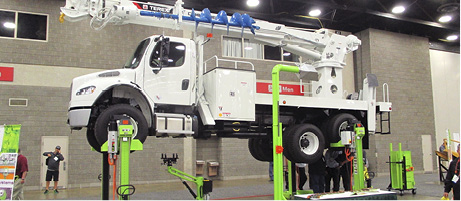Storage of Pneumatic & Vacuum Components

The primary materials (excluding electronics) in industrial pneumatic and vacuum components subject to degradation under adverse conditions are the elastomers and greases commonly used in their construction. Below are general recommendations for storage of these materials and the products that use them, either singularly or stored in combination, and for the preparation and return of the components to service.
Temperature
Temperature needs to be considered in relation to length of exposure and condition of the product for storage purposes. The condition of a product is defined as in a “new condition” (never used) or as in a “used condition” (previously operated with compressed air).
A short-term exposure need only be considered as the amount of time it takes to reduce the temperature of the product to a below-freezing temperature. This may be less than a few hours or several days depending on the conditions. A long-term exposure may be considered any period longer than this. Any exposure to temperatures above the maximum stated in the specifications may result in damage, shortened product life, or a change in performance.
Storage temperatures should be kept as constant as possible and within an ambient range of -10° ~ 40°C (14° ~ 104°F) but at an ideal temperature of 4.4°C (40°F). Short or long-term exposure to temperatures below freezing (i.e. transportation) will not harm the elastomers or greases for products in new condition. Temperatures at or below -20°C (-4°F) should be avoided. Products in used condition exposed to sub-freezing temperatures may be damaged if measures have not been taken to ensure no water contamination is present.
Humidity
The relative humidity should be kept at or less than 65%.
Light
Exposure to sunlight or UV should be avoided.
Contaminates
Contamination can come from internal or external sources. The surrounding atmosphere should be free of chemical fumes, organic solvents, saltwater spray, ozone, or any higher concentrations of oxygen or other gases. Products stored with internal contamination, such as water from condensation, may corrode or degrade during storage and fail immediately or shortly after return to service. Additional care must be taken when preparing these products for storage.
Storage Length
Products with elastomers that are exposed directly to the atmosphere, such as vacuum pads, will have shorter shelf lives. Piston and rod seals under mechanical compression will also not store as long. In addition, the condition of the product and the way it is prepared for storage will make a difference in how long it can be successfully stored. If the product (or machine) is to be stored longer than seasonally (two years or more), then an evaluation should be made if the machine or product should be sold and replaced at a future date.
Preparing Products or Machines for Storage
Carefully make sure there is no residual pressure in the machine. Look for water in any of the filter bowls, and empty if found. This indicates water contamination is likely present in the machine, and additional measures to clean and dry the machine before storage may be required. Empty any lubricator bowls, and make sure any movable components are secured against uncontrolled movement.
Wrapping the product externally and using a dry air purge internally are good practices to avoid storage problems from contaminates, as well as the possibility of condensation and freezing condensation if the storage conditions warrant. Products should be stored inside boxes, containers, or crates designed for ease of movement without imparting any shock or vibration to the product. These boxes, containers, or crates should be labeled and date coded for future reference.
Rapid temperature changes from hot to cold should be guarded against to prevent condensation, particularly if no measures have been taken to condition the air inside of and around the components. Insulating the container, depending upon storage conditions, may be a good idea.
A part number list of products and a set of their operational manuals should be enclosed in a clear plastic bag and included in the storage container. Use of a desiccant in container form (readily found in most hardware stores and available from industrial suppliers) can be placed inside the storage container to keep the relative humidity low.
Return to Service
After removing the product or machine from the storage container, the products should be allowed to return to the operating temperature range. Review and observe all safety requirements, as well as machine and individual product operating requirements. All tubing, fittings, electrical connections, and machine elements should be checked. Replace any suspect items.
Fill any lubricator bowls with the recommended oil. Priming the lubricator may be necessary to ensure oil is present at the outlet. Apply pressure gradually to the machine to the minimum required for testing individual components. Do not suddenly add full-line pressure.
Seals in cylinders and valves that have been idle for long periods of time may have some initial sticking issues. Individual components should be tested one at a time and several times prior to starting a sequential operation to ensure they are operating correctly.
After individual testing is completed, a full machine test should be conducted prior to being put back into service. Check the machine frequently after initial startup for correct operation prior to rotating back into a standard preventative maintenance schedule.
Author’s Note: There are a wide variety of materials used in the construction of pneumatic and vacuum components. The information provided in this article cannot account for every possible variable or guarantee the future performance of all products subjected to various storage conditions, but is rather intended as a practical set of guidelines
for a successful outcome.







